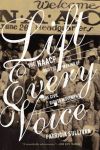“I’m telling my dad!”
Four simple words that put fear into schoolyard bullies, teasing siblings and everybody within earshot of your wail. Together, they made a declarative statement that conjured up a tall, imposing figure with booming voice and a long shadow—someone mighty who wouldn’t allow anybody to mess with you.
“I’m telling dad!” Words that might have, in truth, been about as effective as a wet spaghetti, but which made you feel stronger just saying them.
And how did your pop do it? Read “Lift Every Voice: The NAACP and the Making of The Civil Rights Movement” by Patricia Sullivan and you’ll see that, all your life, dad had help watching your back.
 |
“In the summer of 1910 the NAACP remained little more than an idea,” says author Patricia Sullivan. The organization got its start nearly two years previously when the National Negro Congress convened, in part, to help combat the racism and violence that was rampant in the South and was escalating in the North. According to press reports of the day, as many Whites as Blacks were in attendance.
During that conference—the second held—the official name of the National Association for the Advancement of Colored People was adopted. Sullivan says the use of “Colored” was the idea of W.E.B. DuBois, who had accepted the job of director of publications and research.
Although the fledgling organization had insider struggles and differences of opinion early-on, it quickly became obvious that focused legal strategies were key in fighting racism. The organization’s first big skirmish came during the 1912 presidential election, when the fight seemed not for more rights but to prevent tighter restrictions on what had already been gained.
By mid-century, there were NAACP chapters in most major cities and dozens of smaller towns. The organization fought for bathroom rights for mailmen and for soldiers and veterans of World War II. It challenged voting restrictions, segregation and inequalities in education, and stood by the Scottsboro Boys, tent city dwellers and anyone who dared to challenge White supremacy. In doing so, it seemed, the NAACP was gearing up for the biggest battle of all.
Starting her story with events from 100 years ago, Sullivan presents the NAACP, its supporters and its fights, as well as milestone achievements and benefits that have come from its presence. Parts of this book are painful to read and others will outrage most readers, even though many decades have passed. My only complaint is that this book winds down in the early years of the Civil Rights Movement, missing what some may feel are the NAACP’s most interesting years.
Sequel, anyone?
If you’re up for a richly-researched history book to wrap up your summer reading season, it’s here in “Lift Every Voice”. Read this book, and you’ll be telling everybody.
(“Lift Every Voice: The NAACP and the Making of The Civil Rights Movement” by Patricia Sullivan c.2009, The New Press, $29.95, 514 pages.)